
We’ve compiled a useful compendium of issues below so you can find out how to spot, prevent and treat some common lawn issues.
Explore our guide and ensure your lawn stays in its best condition year-round, because maintaining a healthy lawn is no easy task!
Common Lawn Problems
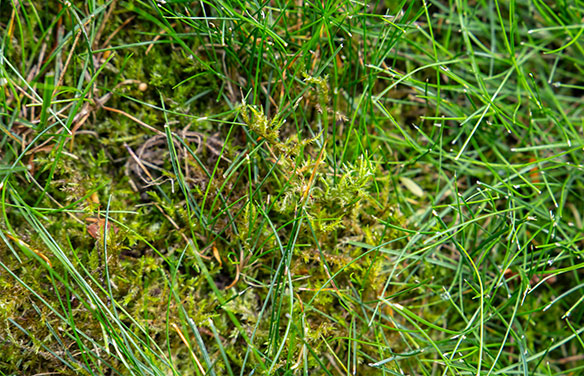
Moss
Moss are resilient and adaptable non-flowering plants which pose a significant challenge to many lawns. Thriving in areas with excessive moisture, shade, and poor turf quality, they are often regarded as the most troublesome lawn issue.
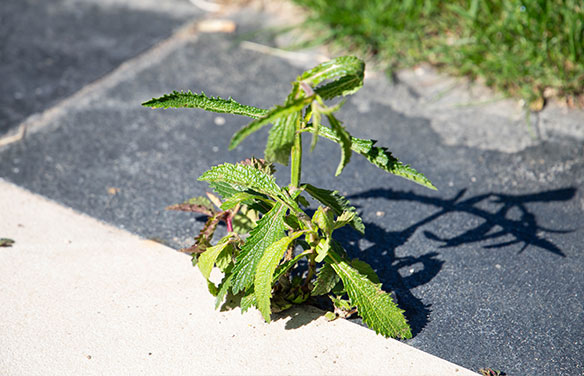
Weeds
In gardening terms, a ‘weed’ is simply any plant that grows in an undesirable location. When it comes to lawns, these unwelcome plants typically produce flowers and seed heads, disrupting the uniform green appearance of a well-maintained, lush lawn.
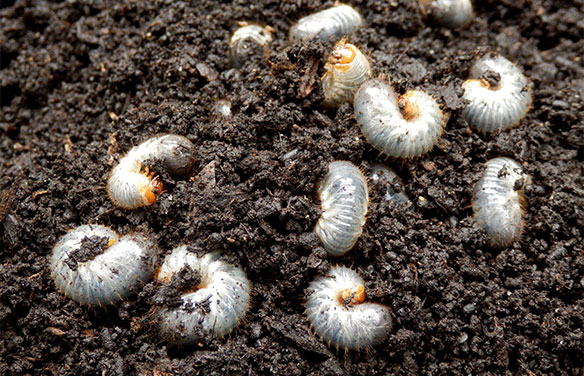
Chafer Grubs
Discovering a chafer grub infestation in your backyard is every lawn lover’s worst nightmare. These tiny creatures feed on grass roots, causing unsightly yellow patches on your once-pristine lawn. Even worse, they attract foxes, badgers, and birds, who dig up your lawn in search of a meal.
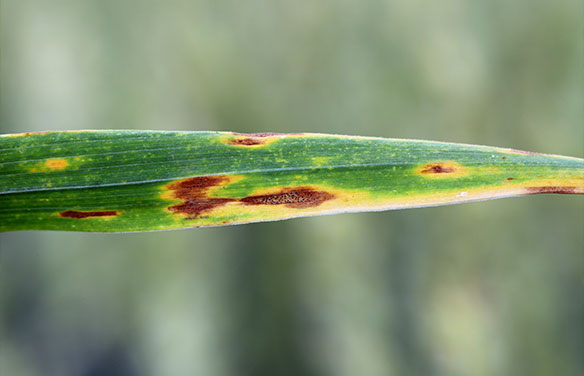
Leaf Spots
Leaf spots on your lawn are usually an indication of dehydration, starting as small burns on blades of grass. If not addressed, they can expand into extensive brown, dried-out areas, ruining your lawn’s luscious green appearance that you worked so hard to get.
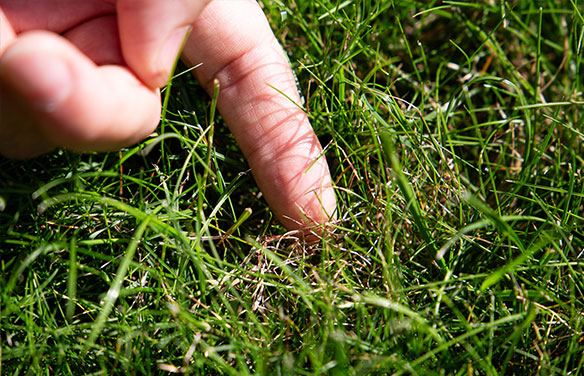
Red Thread
Red thread (Laetisaria fuciformis) is a reddish fungus that thrives on grass blades, particularly during the summer months. It tends to appear on lawns suffering from nitrogen deficiency. If not treated promptly, this fungal condition can quickly spread and affect significant areas of the lawn.

Rust
Lawn grasses, like other plants, can be vulnerable to rust. This term encompasses various diseases that produce orange-coloured spores on grass blades, giving them a rusty appearance. While rust won’t necessarily kill your lawn, it does make it look orange and less visually appealing.

Lichen
Biologically fascinating, lichen is the outcome of a symbiotic relationship between fungi and algae. However, when it comes to lawns, it becomes an unsightly issue causing wilting, discolouration, and hindered grass growth. Lichen should be addressed as soon as it’s spotted.
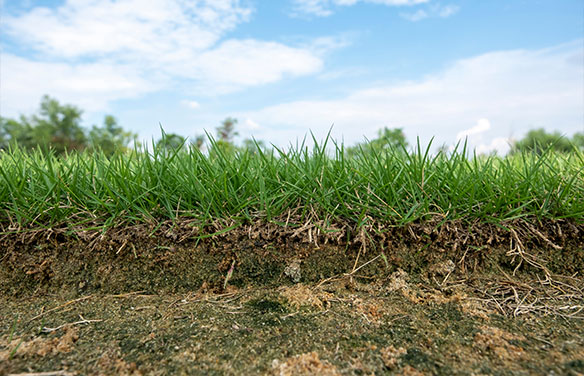
Thatch
A small amount of thatch is beneficial, aiding water absorption and temperature protection. However, excessive thatch becomes problematic. Thick layers block moisture and nutrients, hindering healthy growth, promoting disease, and preventing new grass from sprouting.
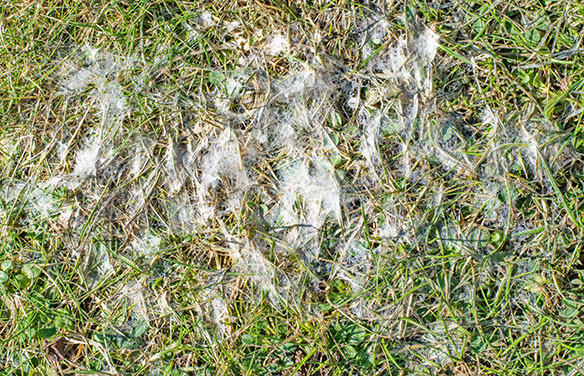
Snow Mould
Fusarium patch, or snow mould, is a fungal infection on lawns causing brown or yellow patches, common in autumn or winter due to excess moisture and lawn stress. Snow or leaves covering the grass can foster snow mould growth, making it essential to remove debris promptly.
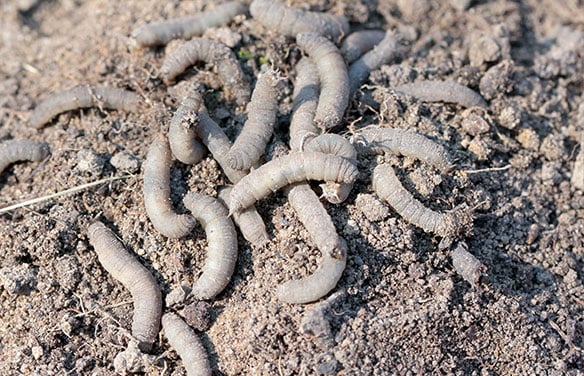
Leatherjackets
Leatherjackets are the larvae form of crane flies, or ‘daddy long legs’. In autumn, a single female crane fly can lay up to 300 eggs in your lawn! These larvae cause havoc in two ways: feeding on grass roots, leading to dead patches, and by attracting natural predators.
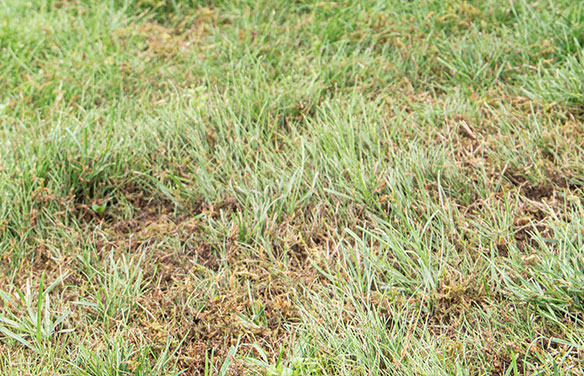
Dry Lawn Advice
In the UK, dehydration is a prominent lawn care issue during low rainfall periods. Inadequate water can swiftly lead to yellowing and drying out of lawns. Aqua boost will maximise the use of available moisture in your lawn, helping it to remain healthier for longer in dry conditions.
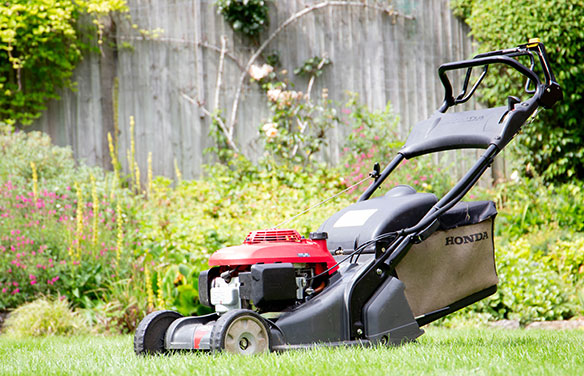
Mower Damage
Despite good intentions, some of the most severe lawn damage can result from improper lawn care practices by the owners themselves. Mowing mistakes such as cutting the grass too low, infrequent mowing, or using dull blades can harm your beloved lawn.

Wherever you are, there’s a good chance we have a lawn expert just waiting to come and transform your lawn!
We have more than 100 dedicated teams of lawn care experts up and down the country. Simply enter your postcode to start the journey to a better, greener lawn today.

